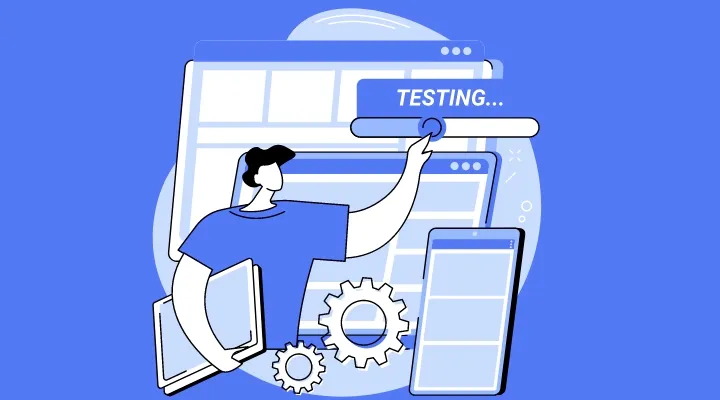Mobile App Testing And Usability: A Step-By-Step Guide

In the fast-paced world of mobile app development, ensuring a seamless user experience is paramount for success. As a young and dynamic startup in India's thriving tech landscape, you need to deliver flawless apps that captivate your users and keep them coming back for more.
Research by UserTesting reveals that 86% of users uninstall or delete apps due to poor user experience, emphasizing the crucial role of usability testing in retaining users. In this comprehensive guide, we will dive into the world of mobile app testing and usability, exploring its significance, different types of usability testing, key metrics to measure, why it's critical for the success of your mobile app, and how you can leverage these insights to make your app a resounding hit.
What is Mobile App Usability Testing?
Mobile app usability testing is a process that evaluates how user-friendly and intuitive your app is for your target audience. It involves conducting tests with real users to observe their interactions, understand their pain points, and identify areas for improvement. According to Statista, the global mobile application testing market is projected to reach $13.3 billion by 2026, growing at a CAGR of 19.8% from 2021 to 2026.
By putting your app in the hands of real users, you gain valuable insights into how they navigate through your app, their satisfaction level, and whether your app meets their expectations.
Why is Mobile App Testing Critical?
Ensuring the quality and usability of your app through mobile app testing is non-negotiable for the following reasons:
First Impressions Matter: Users have a plethora of options in the app market. A buggy or difficult-to-use app will deter users from engaging further, leading to high bounce rates and lost opportunities.
Build Trust and Loyalty: A well-tested and user-friendly app builds trust and fosters loyalty. Users are more likely to return and become advocates for your app if they have a positive experience.
Lower User Acquisition Cost: Satisfied users are more likely to refer your app to others, reducing your marketing expenses for acquiring new users.
Optimize App Performance: Performance issues such as slow loading times or crashes can lead to negative reviews and poor app store rankings. A Google survey shows that 32% of users expect apps to load within two seconds, and 53% of users are likely to abandon an app if it takes more than three seconds to load.
Types of Usability Testing
Explorative Testing: In the initial stages of app development, explorative testing allows you to gather feedback from potential users about their preferences and expectations. By understanding your target audience's needs, you can shape your app to align with their requirements.
Comparative Testing: Compare your app's usability with similar apps in the market. Identify strengths and weaknesses relative to your competitors, and use this information to create a distinctive user experience.
Example: MakeMyTrip, a leading Indian online travel agency, conducted comparative usability testing with other travel apps. This approach helped them identify unique selling points, enhance their app's usability, and maintain a competitive edge in the travel industry.
Key Metrics to Measure in Mobile App Usability Testing
Success Rate: Measure how successfully users can complete specific tasks in your app. A high success rate indicates an intuitive app interface, while a low rate signals potential areas for improvement.
Error Rate: Track the number of errors users encounter while navigating your app. Reducing error rates enhances user satisfaction and minimizes frustrations.
Task Completion Time: Analyze the time users take to complete critical tasks. Faster task completion implies a well-designed app, while lengthy durations may indicate complexity.
User Satisfaction (CSAT): Use surveys or feedback to gauge user satisfaction with your app's usability. Satisfied users are more likely to be loyal and recommend your app to others.
Example: Paytm, a popular digital payment platform in India, closely tracks metrics like success rate, error rate, and task completion time. By prioritizing user-centric design and usability improvements, Paytm achieved high customer satisfaction and became a dominant player in the fintech domain.
Mobile app testing isn't a one-time process but a continuous journey of refinement. Regularly monitoring user feedback, leveraging analytics, and conducting periodic usability tests enable businesses to adapt their apps to ever-changing user needs and preferences. A case study by Redbus, an Indian online bus ticketing platform, revealed that after conducting usability testing and implementing improvements, they saw a 30% increase in app user retention and a 20% increase in conversion rates.
Remember, a well-tested app is a testament to your commitment to providing a seamless journey for your users. Embrace the power of mobile app testing, and watch your app soar to new heights in the ever-evolving tech landscape of India. With the right testing strategies and a keen focus on user needs, your app will become the next big success story in the Indian app ecosystem.